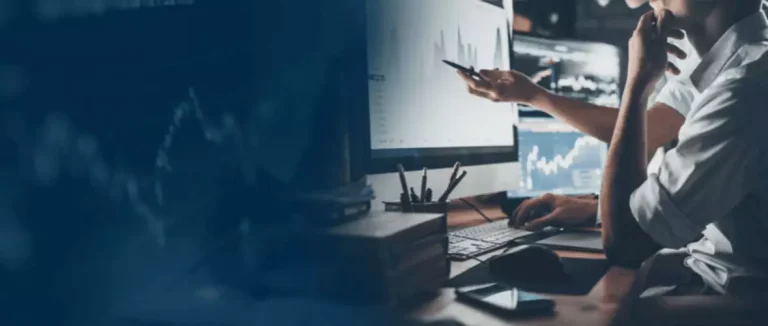Zero slippage refers to the situation the place a commerce is executed precisely at the price the dealer anticipated, that means no slippage happens. This is usually seen in secure and extremely liquid markets the place there is enough quantity to meet the order necessities at once. Slippage can affect the efficiency of a commerce by increasing the cost of getting into or exiting a place.
Constructive Slippage
- This effect is particularly noticeable in fast-paced markets like cryptocurrencies.
- For instance, a system designed to execute orders at the best out there value might fail to take action as a result of slippage, leading to suboptimal results.
- This phenomenon is especially common in fast-moving markets, the place price modifications can happen inside milliseconds, making it challenging for orders to be crammed at exact price ranges.
- Constructive slippage seems when a trade is executed at a greater worth than anticipated, whereas negative slippage occurs when a trade is conducted at a worse value than anticipated.
- Algorithmic buying and selling techniques can execute trades at a speed and frequency that’s unimaginable for a human dealer, reducing the time lag between order placement and execution.
Understanding slippage and its impact on buying and selling methods is essential for traders. Slippage arises from varied components, including market volatility, liquidity, and order measurement. Throughout intervals of excessive volatility, the market worth can fluctuate quickly, making it challenging to execute orders at the desired value.
This can occur in each directions, resulting in both a more favorable or much less favorable consequence for the dealer. For occasion, if a dealer goals to sell a inventory at $60 per share, but as a result of slippage, the trade is executed at $59.50 per share, it ends in a decrease profit than initially anticipated. One Other technique includes using statistical analysis to measure slippage over a sequence of trades. This methodology is especially useful for high-frequency merchants who execute a giant quantity of trades in a brief period. By analyzing the data, they will modify their algorithms to minimize slippage and improve total performance.
It happens when there is a difference between the expected worth of a trade and the actual value at which it’s executed. This discrepancy may be influenced by varied factors, making it essential for merchants to understand and manage effectively. Slippage occurs when an order is executed at a worth completely different from the one anticipated. This discrepancy can happen as a outcome of varied components similar to market volatility, order dimension, and the pace at which the market is transferring.
It doesn’t simply occur by probability, and it outcomes from specific market situations. Utilizing the right instruments and strategies can help traders determine and handle slippage effectively. It is less of a priority for long-term investors as they aren’t entering and exiting positions as incessantly. However, it might possibly still have an result on entry and exit factors, so some buyers might use limit orders to define their worth slippage tolerance.
By analyzing past price fluctuations and liquidity ranges, merchants can estimate the potential vary of slippage for a given trade. Moreover, there are additionally buying and selling platforms and software instruments obtainable that can assist present real-time slippage estimates primarily based on the present market circumstances. A Number Of components can contribute to slippage, including market volatility, liquidity, and the velocity of order execution.
In 2024, the Identity Theft Resource Heart reported that corporations sent out 1.3 billion notifications to the victims of knowledge breaches. It’s clear that despite rising efforts, personal information breaches usually are not solely persevering with, but accelerating. Firms are investing in cybersecurity controls corresponding to firewalls, encryption and awareness training at document levels. You should consider whether you perceive how CFDs work, and whether you can afford to take the high danger of shedding your cash.

During durations of high volatility or low liquidity, there is a larger probability of slippage occurring. Moreover, if the trader’s order is large or the market is transferring rapidly, the probability of slippage additionally will increase. During periods of excessive volatility, prices can move quickly within a short time. For occasion, when a main information event happens , similar to an economic knowledge launch or a company’s earnings report, it could possibly cause costs to leap considerably from one commerce to the subsequent. This volatility risk is a typical discrepancy foreign exchange merchants should navigate, particularly https://www.xcritical.in/ throughout main financial announcements.
How Much Slippage Is Considered Normal?

By carefully contemplating factors similar to market circumstances, order size, and order type, merchants can enhance the efficiency and profitability of their methods. Slippage isn’t confined to at least one kind of trading; it can occur across various markets. In inventory buying and selling , worth discrepancy would possibly occur throughout market gaps on the open or during high-impact news occasions. In the foreign exchange market, slippage usually occurs round main economic Proof of stake releases that cause quick and vital fluctuations in foreign money pairs. Cryptocurrency traders might experience discrepancies during periods of intense buying and selling activity, which may trigger the price of a digital asset to move sharply.
Understanding Slippage In Buying And Selling: Types, Causes, And Mitigation Strategies
Slippage occurs when the worth at which your order is executed doesn’t match the value at which it was requested. This normally occurs in fast-moving markets when the value can change between the time you place your order and the time it’s executed. Slippage can influence your trades by causing you to enter or exit a commerce at a worse worth than you intended. Excessive slippage can erode earnings over time and make it difficult to achieve consistent returns. Traders should concentrate on the potential influence What is Slippage Tolerance of slippage on their long-term buying and selling efficiency and regulate their methods accordingly. Market liquidity refers back to the variety of patrons and sellers in the market and the way quickly and simply a dealer can buy or promote an asset without affecting its worth.
Behind each weblog publish lies the mixed expertise of the individuals working at TIOmarkets. We are a staff of devoted industry professionals and financial markets enthusiasts committed to offering you with buying and selling training and monetary markets commentary. Our aim is to help empower you with the knowledge you have to commerce within the markets effectively.
